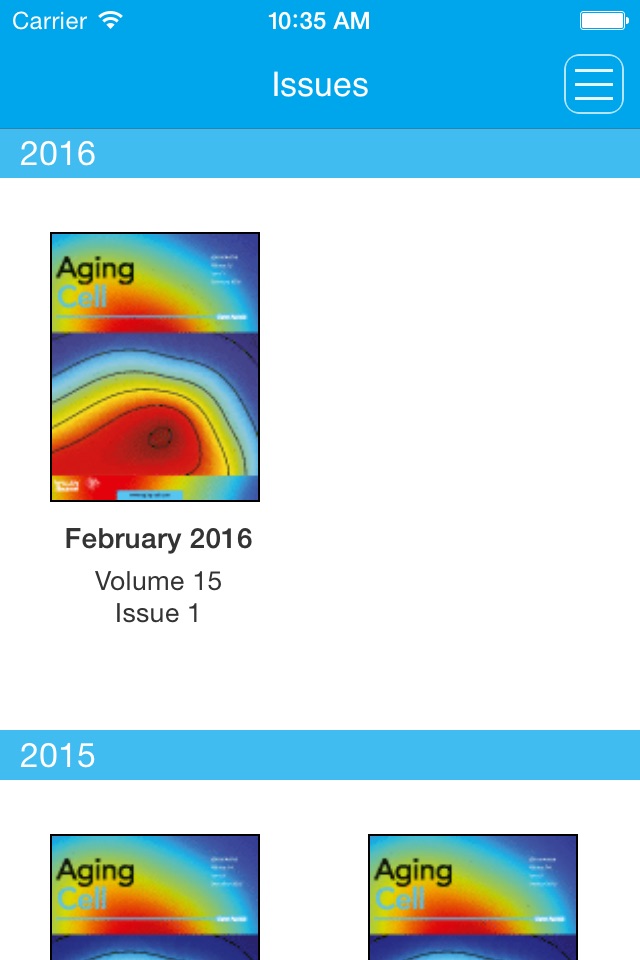
Aging Cell app for iPhone and iPad
The Aging Cell app keeps you up to date with all the latest research in your area. Download the app today to enjoy an entirely new browsing and reading experience, where you can:
• Stay current with the latest articles published in this influential Open Access journal
• Be notified when new issues are available
• Save your favourite articles for quick and easy access offline
• Browse and bookmark articles from all available issues
• Browse and zoom in on images
• Share articles with colleagues or students
The aim of Aging Cell is to publish the highest quality, innovative research addressing fundamental issues in the biology of aging. For publication in Aging Cell, the work must provide a major new contribution to the understanding of aging and be of general interest to the community. Aging Cell seeks to cover all areas of geroscience, highlighting research that uncovers mechanistic aspects of the aging process, as well as the links between aging and age-related disease. Observations of novel aging processes without substantial mechanistic insight will be considered, but should be of especially high impact for the field. Topics including, but not limited to, nutrient-responsive signaling pathways, neuronal and endocrine signaling pathways, tissue interactions, genetic and epigenetic regulation and integrity, proteostasis, circadian rhythms, ROS and mitochondria, cellular senescence, stem cells, progerias and interventions that affect aging are encouraged. All experimental approaches, including plant models, are welcome. Papers that focus on the pathogenesis of a specific age-related pathology are also of interest, but should offer new insights into the fundamental links between aging and disease.
The Anatomical Society acts as a forum for those concerned with research and education in the anatomical sciences, which include topographical anatomy, histology, cell biology, embryology, neuroanatomy, physical anthropology, biomechanics, pathological anatomy and related topics. It principally serves anatomists in the U.K. and Republic of Ireland, but also has Members in many other countries world wide. It has a long history of service to anatomical scientists, having been founded in 1887.



